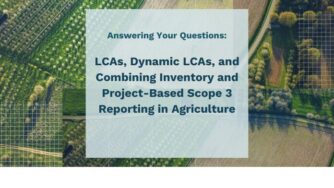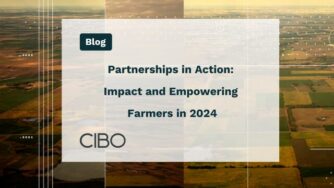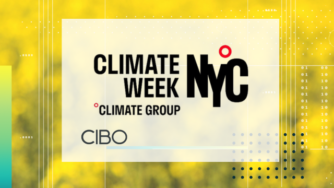Nearly every corner of modern industry is affected by general standards that allow regulators, investors, companies, consumers, and other entities to easily exchange products and information.
Consider a few examples:
- Generally Accepted Accounting Principles (GAAP) ensure that anyone looking at audited financial statements can build a basic understanding of a company’s financial status without having to delve into the obscure details of how each company happens to classify its assets, debt obligations, and transactions. GAAP ensures consistent treatment of each, and certified auditors provide assurance the company has been faithful to the standards.
- Thousands of standards govern the interoperability of computing systems: WiFi, USB, HTML, IP, programming languages, monitors, printers, keyboards, etc.
- ISO 9000 certifications tell investors and consumers that a company’s products are produced with processes that satisfy widely-held quality criteria.
- Food label standards ensure consumers can compare similar products by providing the same information for each product.
- ISO alone has developed nearly 24,000 international standards that cover a very wide variety of fields and topics.
With the rising importance of environmental accounting over the last 20 years, standards have also been developed for defining, measuring, and monitoring environmental processes, including emissions and CO2e equivalents. Consider a partial list of questions that stakeholders must address when accounting for and reducing emissions:
- Do we need to account for these items when calculating “our” emissions?
- We make medical equipment. What about the GHG emissions that stem from our manufacturing, packaging and preparation processes?
- Answer: Yes. These GHG and CO2 equivalent emissions count. They are typically counted as Scope 1 emissions.
- If our factory burns fuel and emits CO2, that’s clear. What if the fuel we’re burning is a biofuel?
- Answer: Yes, this still counts. But biofuel combustion is reported separately from other emissions.
- What about the CO2 produced when generating the electricity we buy to run our plant?
- Answer: Yes, this almost always needs to be tracked as Scope 2 emissions.
- What about the CO2 emitted by products after they leave our production facility — computers or cars, for example?
- Answer: It depends. These are increasingly tracked as downstream Scope 3 emissions. Key considerations include: Do the people receiving your emission statements want this included? Does the market want to know this information? Such requests are becoming more common.
- What about our suppliers’ emissions, for example, the nitrous oxide released when nitrogen fertilizer is used to grow the corn we use in our products?
- Answer: Yes. These are increasingly tracked as upstream Scope 3 emissions from the supply chain.
- What about our subsidiaries?
- Answer: It depends on ownership and/or control fraction of the subsidiary.
- We make medical equipment. What about the GHG emissions that stem from our manufacturing, packaging and preparation processes?
- How do we know whether a company’s reported emissions are accurate?
- If someone is selling credits because they reduced their emissions, how do we know that their claimed emission reductions actually happened?
- How do we know the credits we’re buying weren’t also sold to someone else (“double-counting”)?
- How do we know that the emissions reduction claimed by one project didn’t result in an emission increase elsewhere (“leakage”)?
- How do we know the credits we are buying are funding new emission reductions, and not emission reductions that would have happened anyway (“additionality”)? For example, if TRS is proposing to reduce its emissions by capturing the methane emissions from its new landfills, but new landfills are already legally required to capture methane emissions, then this reduction is not “additional”. It would have happened anyway.
Without standards, entities will answer these questions in different ways, making it much more difficult for one entity (e.g., an investor) to understand the emissions report of another (e.g., the greenhouse gas inventory released by a company). To fix this a wide variety of standards and protocols have been published to answer these questions in a consistent way and ensure that everyone is speaking the same language:
- Standards from organizations such as the IPCC, Greenhouse Gas Protocol, ISO, and the British Standards Institution focus mainly on defining rigorous processes that ensure high-quality and low waste while avoiding policy-related topics that affect how a standard is used. Standards, for example, rarely make statements concerning leakage or additionally.
- Protocols by carbon programs like the Clean Development Mechanism, Verra, Climate Action Reserve, CIBO, and many others also include requirements like those provided in standards, often by ensuring compliance with an existing standard. But these organizations must also ensure the results of the process capture real value: credits will be bought only if buyers believe they represent real emission reductions. So carbon programs design their protocols with policies to build buyer confidence.
Let’s continue our Acme, Inc. example. Acme needs to know that the credits it is buying from TRS to offset its own emissions represent actual emission reductions (i.e., that there is real value behind the asset it is purchasing). The simplest way to do this is by buying the credits from a third-party registry (Verra, American Carbon Registry, Climate Action Reserve, etc.) that has done the work to insure the credits are genuine (because an independent third party has certified that the credits were created through strict adherence to one of the registry’s protocols).
The process would look like this:
- TRS registers its project with the registry.
- TRS contracts with a registry-approved third-party verifier that will ensure TRS adheres to the rules of the registry’s protocols.
- TRS executes the project, reducing its emissions.
- The third-party verifier audits the project. They certify the project was executed as expected and that the emission reductions have been proven to be real.
- TRS submits its report to the registry, including the certified third-party audit results.
- The registry issues credits to TRS for the proven emission reductions.
- Acme buys the credits from TRS. In some cases the registry provides the market in which this sale takes place. In other cases the sale happens outside of the registry, and TRS arranges with the registry to assign ownership of those credits to Acme.
- Acme retires the credits it purchased from TRS to offset its emissions.
Learn more by reading The Definitive Guide To Carbon and Climate Commitments.



